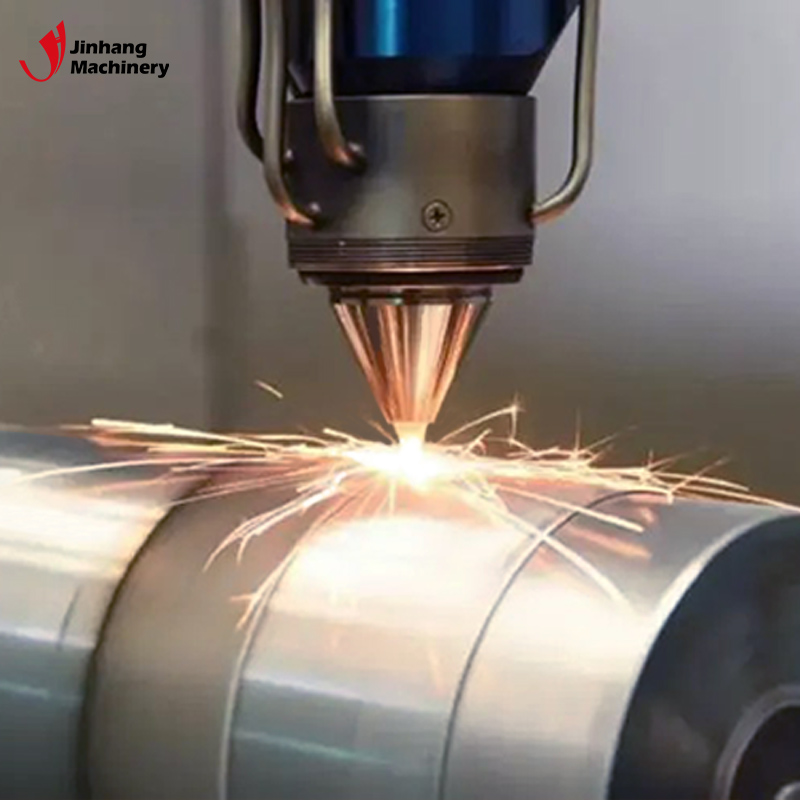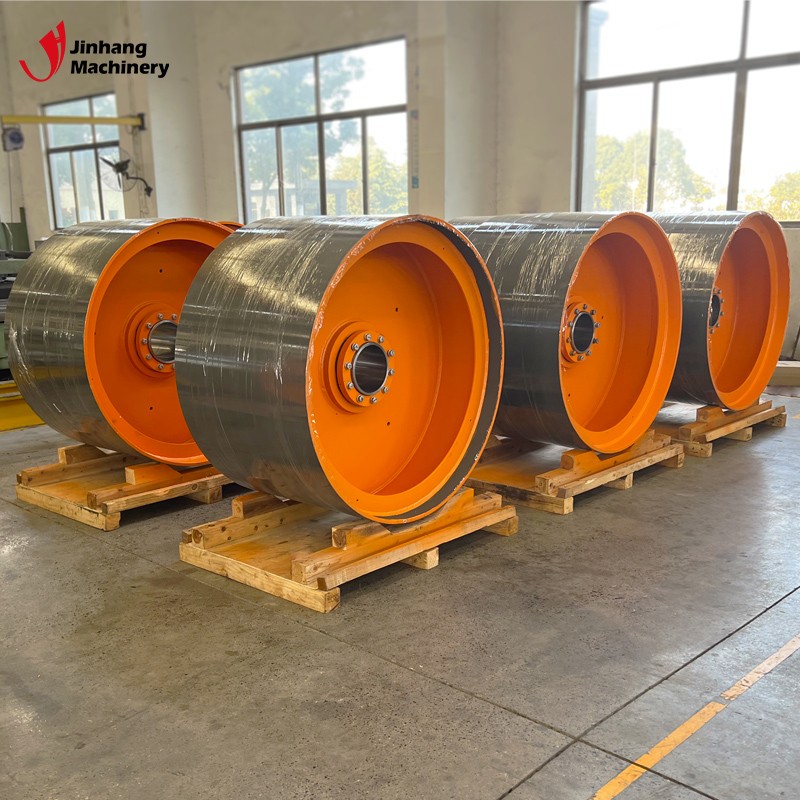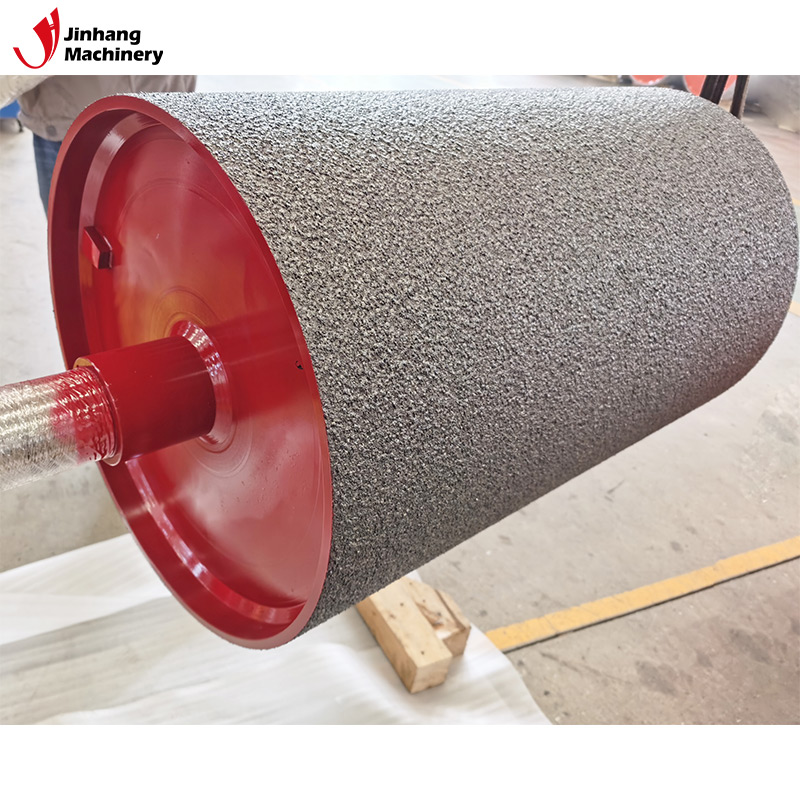How to calculate the mesh volume of ceramic anilox rollers?
Ceramic anilox rollers are widely used in the printing, coating and packaging industries due to their precise liquid transfer capabilities, excellent wear resistance and corrosion resistance. The mesh structure on the surface of the anilox roller is the key to its core function and affects the storage and transfer effect of liquid. Therefore, calculating the mesh volume is the basis for determining its working performance and applicability.
This article will explain in detail how to correctly calculate the mesh volume of ceramic anilox rollers and explore the importance of this calculation in practical applications.

What is the mesh volume?
On a ceramic anilox roller, the mesh (also called cells) are regularly arranged depressions or holes on its surface that are used to store and transfer liquids such as inks, coatings, adhesives, etc. The volume of the mesh determines how much liquid the roller can store, and therefore directly affects the coating and printing effect.
The unit of mesh volume is usually expressed in cubic millimeters (mm³). By accurately calculating the mesh volume, production personnel can understand the amount of liquid transferred by the anilox roller in actual use and adjust the mesh design according to specific needs.
What is the geometry of the mesh?
Before starting the calculation, you first need to determine the geometry of the mesh. Common mesh shapes include:
1. Circular mesh: The most common mesh shape, with a simple geometry and easy to calculate.
2. Diamond mesh: The structure is slightly more complex and suitable for transferring larger amounts of liquid.
3. Hexagonal mesh: Used in scenarios with high precision requirements, with a more regular shape.
4. Square mesh: Simple and easy to manufacture, but the liquid transfer is not accurate enough.
The volume calculation method for each geometry is different, so choosing the right formula is crucial.
Circular mesh volume
For circular meshes, the shape of the mesh is similar to that of a cylinder. To calculate the volume of a circular mesh, use the standard formula for the volume of a cylinder:
V=π×r2×h
● V: Mesh volume
● r: Mesh radius
● h: Mesh depth
Diamond mesh volume
The volume calculation of a diamond mesh is slightly more complicated because its shape is irregular and usually presents a prism shape. The volume calculation formula of the prism is:
V=31×h×(A1+A2+)
● V: Mesh volume
● h: Mesh depth
● A1: Upper surface area
● A2: Bottom surface area
Hexagonal mesh volume
The volume calculation of the hexagonal mesh needs to use the area formula of the hexagon, and then multiply it by the depth to get the volume:
A=×
● A: Area of the hexagonal mesh
● s: Side length
● V: Volume = Area (A) multiplied by Depth (h)
Square mesh volume
The calculation of the square mesh is relatively simple, and the cube volume formula can be used directly:
V=×h
● V: Mesh volume
● a: Mesh side length
● h: Mesh depth

How to calculate the mesh volume of ceramic anilox roller?
To ensure the accuracy of the calculation process, the following are the specific steps:
Measure the size of the mesh
Before calculating the mesh volume, the specific size of the mesh must be measured first. This includes:
● Mesh diameter or side length: Depending on the mesh geometry, measure the corresponding diameter, side length or diagonal length.
● Mesh depth: Use a precision measuring instrument, such as a thickness gauge or microscope, to determine the mesh depth.
Make sure all measurements are accurate, which will directly affect the accuracy of the calculation results.
Choose the right volume calculation formula
Depending on the mesh geometry, choose the appropriate volume formula. Make sure you understand the physical meaning of each parameter and accurately substitute the values. The specific calculation steps and methods may be different for meshes of different shapes.
Perform the calculation
Substitute the measured values into the selected formula and perform the calculation. You can use a calculator or spreadsheet tool to perform complex calculations to reduce manual errors.
Result verification
After calculating the volume, it is recommended to verify whether the result is reasonable by comparing it with industry standards or mesh volumes in actual applications. If the calculated result deviates too much, you may need to re-check the measurement data or calculation process.
Why is mesh volume calculation important?
Ensure the accuracy of liquid transfer
The mesh volume directly determines the amount of liquid transferred during each printing or coating process. Too large a mesh volume may lead to excessive liquid coating, increasing waste and cost; while too small a volume may lead to uneven coating and affect product quality. Therefore, calculating the precise mesh volume is crucial to controlling liquid transfer.
Optimize production efficiency
By accurately calculating the mesh volume, production personnel can better match the needs of the anilox roller with the specific production process. Whether it is controlling the amount of ink during printing or transferring adhesive during coating, a reasonable mesh volume design can improve production efficiency and reduce material loss.
Extend equipment life
Understanding the volume and structural characteristics of the mesh can help companies reasonably maintain and maintain the anilox roller in actual use. For example, a reasonable design of the mesh volume can reduce the residue of liquid in the mesh and reduce corrosion on the surface of the anilox roller, thereby extending the service life of the equipment.

What are the factors that affect the mesh volume?
Material properties
Anilox rollers of different materials will affect the calculation of the mesh volume. Ceramic anilox rollers perform well in high-precision and high-frequency applications due to their high hardness and corrosion resistance, and the mesh volume remains stable.
Liquid viscosity
Liquid viscosity is also an important factor affecting mesh volume design. High-viscosity liquids require larger mesh volumes to ensure sufficient transfer, while low-viscosity liquids are suitable for smaller mesh volumes to prevent excessive liquid coating.
Surface treatment process
The surface treatment process of the anilox roller will also affect the final performance of the mesh volume. Surface treatment by electroplating, coating or grinding can change the shape and depth of the mesh, thereby affecting its ability to store and transfer liquid.
How to improve the accuracy of mesh volume calculation?
Use precision measuring equipment
In order to improve the accuracy of mesh volume calculation, precision measuring equipment must be used. Tools such as laser measuring instruments, microscopes and high-precision thickness gauges can provide accurate mesh size data to ensure the accuracy of calculations.
Average multiple measurements
Due to manufacturing errors or limitations of measuring equipment, a single measurement may produce deviations. For this reason, it is recommended to take multiple measurements and take the average of the measurement results to obtain more accurate mesh size data.
With the help of calculation tools
When performing complex mesh volume calculations, professional calculation tools or software can be used to reduce human errors. These tools can automate the calculation process and provide more accurate results.
